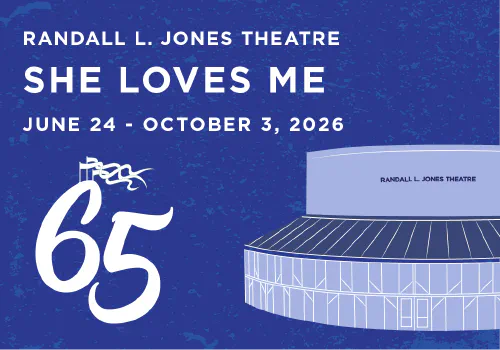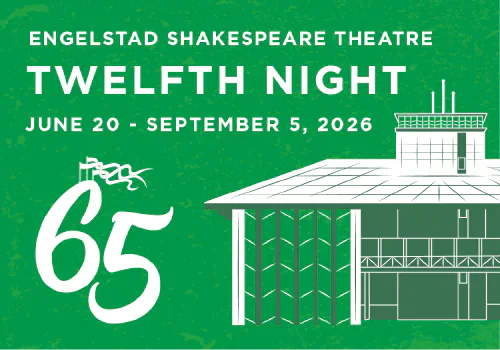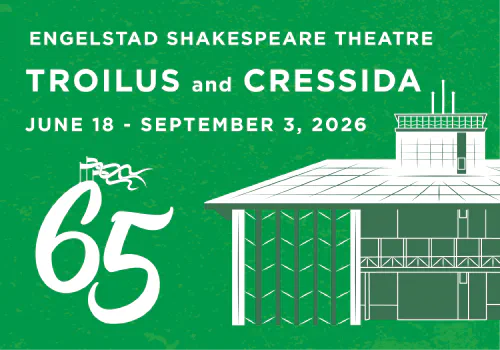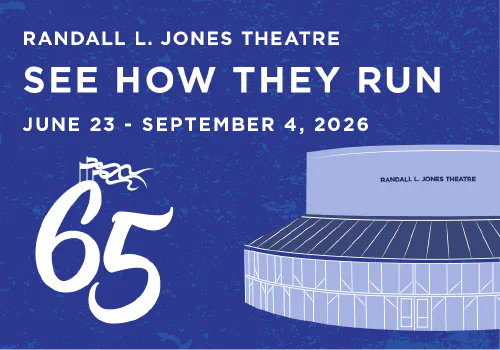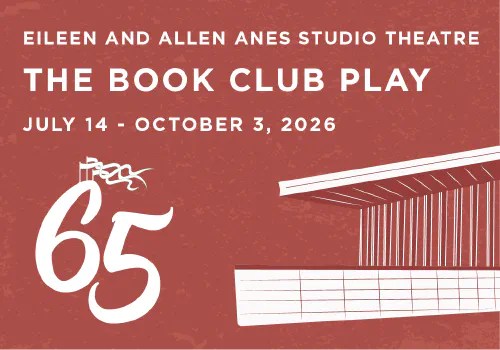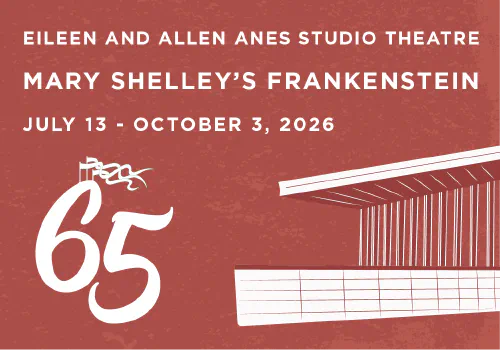NOTE: The articles in these study guides are not meant to mirror or interpret any particular productions at the Utah Shakespeare Festival. They are meant, instead, to be an educational jumping-off point to understanding and enjoying the play (in any production at any theatre) a bit more thoroughly. Therefore the stories of the plays and the interpretative articles (and even characters at times) may differ from what is ultimately produced on stage.
Also, some of these articles (especially the synopses) reveal the ending and other “surprises” in some plays. If you don’t want to know this information before seeing the plays, you may want to reconsider studying this information.
By Liz Armstrong
The first play written by Henry Lewis, Henry Shields, and Jonathan Sayer, The Play That Goes Wrong saw massive success in London. The play has been running for eleven years and continues to be the longest running play at the Duchess Theatre in London, after 3,000 performances in early January. But what made it so successful? Where did the inspiration for such a hilarious production come from?
The three met in school at the London Academy of Music and Dramatic Art (LAMDA). In an interview with Greenleaf Productions, the playwrights mentioned some of what inspired the comedic play-within-a-play.
So let us deep-dive into the inspiration Lewis, Shields, and Sayer mentioned, and perhaps we can discover together the magic that created this show, while analyzing the brains of those who did it.
London Academy of Dramatic Art
The playwrights originally met at LAMDA. With a similar educational background, it is inevitable that the peers-turned-roommates would draw inspiration from both the school and each other. Other elements of influence came from their common love of British comedy and their own theater disaster stories.
They even met the future director of the show at LAMDA, as Mark Bell worked there.
Sayer explained in the interview with Greenleaf Productions that collaboration was a huge part of creating the play.
“It’s a great way to write–with three people. It means we can troubleshoot and build off each other’s ideas,” Sayer said. “That comes back to how the whole company works, the scripts are workshopped by the whole team.”
This need for collaboration most likely was enhanced during their university years. They found themselves in a collaborative environment and continued from there. LAMDA is a drama conservatory, which leans on selective training and teaching in small groups.
LAMDA’s homepage “About Us” section says: “The ensemble is at the heart of our work; drama is a collaborative art form and our training stresses the importance of collaboration to achieve excellence.” When Lewis, Shields, and Sayer left LAMDA, the collaborative mindset came with them.
Michael Green’s The Art of Coarse Acting
Lewis was quick to say that, for him, a big inspiration for the show came from this book. “This is a very funny book about [the author’s] experiences in amateur theatre,” Lewis said.
According to Green, a coarse actor consists of someone who can remember lines but not the order in which they come, whose eyebrows are attached to their feet, who limps on both legs simultaneously, and who knows everybody else’s lines better than their own.
Described as “essential reading for anyone with a passion for theatre,” The Art of Coarse Acting is “an outrageous spoof that punctures pretentiousness, pokes fun at incompetence, revels in disaster and lifts the lid on life backstage.”
Lecoq-Style Clowning
Henry Lewis says that Director Mark Bell added a lot of clowning (Lecoq-style) to the play. The Lecoq acting style focuses on physicality and movement. It comes from French actor and acting coach Jacques Lacoq, who encouraged his students to be creative and focused on the importance of freedom instead of stringent acting rules.
A Play That Goes Wrong is a comedic farce, making fun of mishap after mishap. Lacking humor, the play would be entirely frustrating. By adding clowning, the ill-fated play becomes funny. An article by Director Jan Henderson outlines some of Lecoq’s teaching.
According to Lecoq, there are seven levels of tension. “Exhaustion,” or “catatonic,” refers to complete relaxation, where there is no tension at all, while a “laid back” state refers to a “Californian” personality, where everything you say or do is “cool.”“Neutral” refers to the state of being totally present and aware, like that of contemporary dance. “Alert” is just what it seems–suggesting to look at things and display indecision, while “suspense” convinces the audience that something bad is about to happen. The “passionate” state follows this, illustrating the explosion of tension. Finally, there is a “tragic” state. For this, picture King Lear holding Cordelia in his arms.
These states of tension are all parts of clowning. Henderson notes that “clowning isn’t something we need to learn as much as something we become aware of in ourselves. . .whenever we have strong emotions, we are in ‘clown.’”
Lecoq encouraged this mindset––guiding his students to let their own bodies speak loudly. In A Play That Goes Wrong, the actors don’t just illustrate what’s happening through words, but through physical actions. The tripping over everything, the corpse that can’t play dead––that is all clowning! Ultimately, Bell’s addition of this style of clowning brings vibrancy and movement and humor to A Play That Goes Wrong.
In the original production, the playwrights shared that their actors actually underwent circus training so that they could pull off this kind of acting. Because Lecoq-style clowning is so physically demanding, it is important to make sure that these actors are performing in a sustainable and safe manner.
Think Festival actor Michael Doherty’s clowning in 2022’s Clue and expect something similar from The Play That Goes Wrong
The Idea That People Should Laugh At Us
“Something we like in comedy is the idea of inviting people to laugh at us as opposed to with us,” Sayer said.
He explained that The Play That Goes Wrong is the story of people over-reaching themselves and doing things that aren’t in their capability, and that is where the humor comes in.
“You have a story of six actors and two technicians who understand how you would put on a play and theoretically get how acting could work,” Sayer said. “It’s all just a little bit too far for them to practically do it.” From there, the audience experiences a ridiculous amount of humor from the disastrous and ill-fated play-within-a-play.




